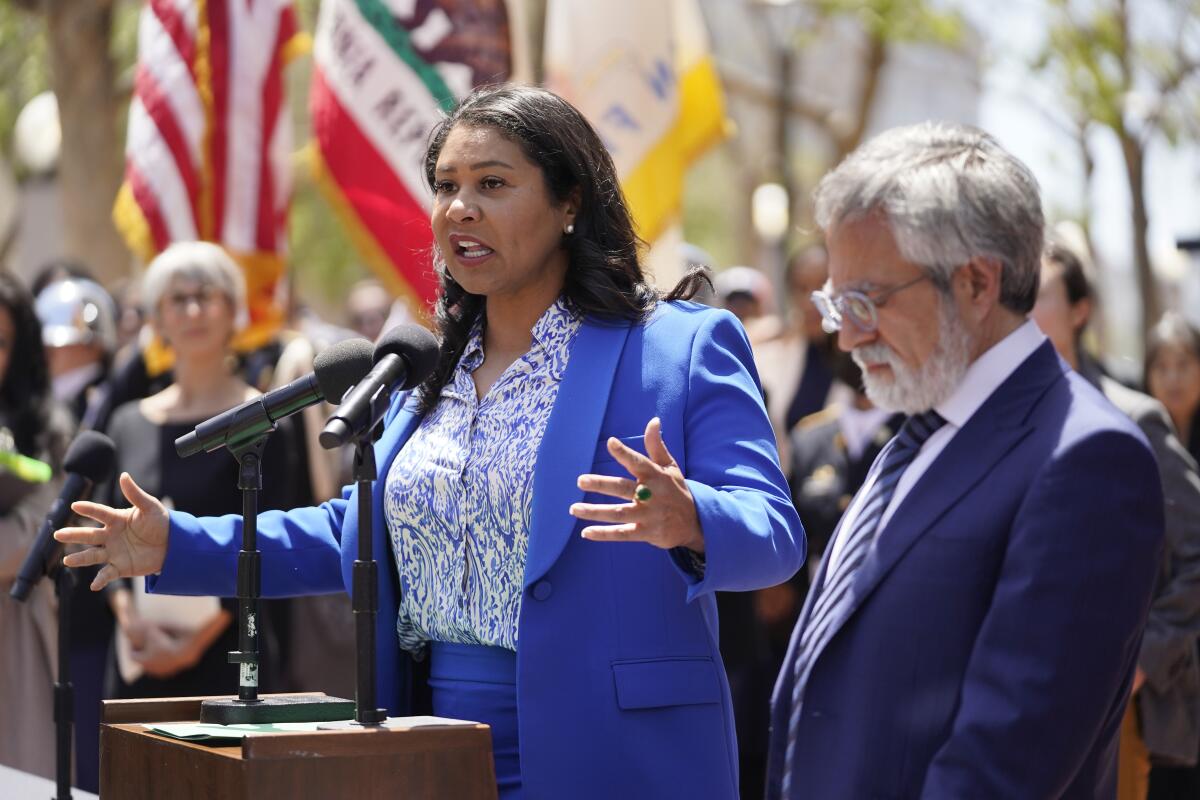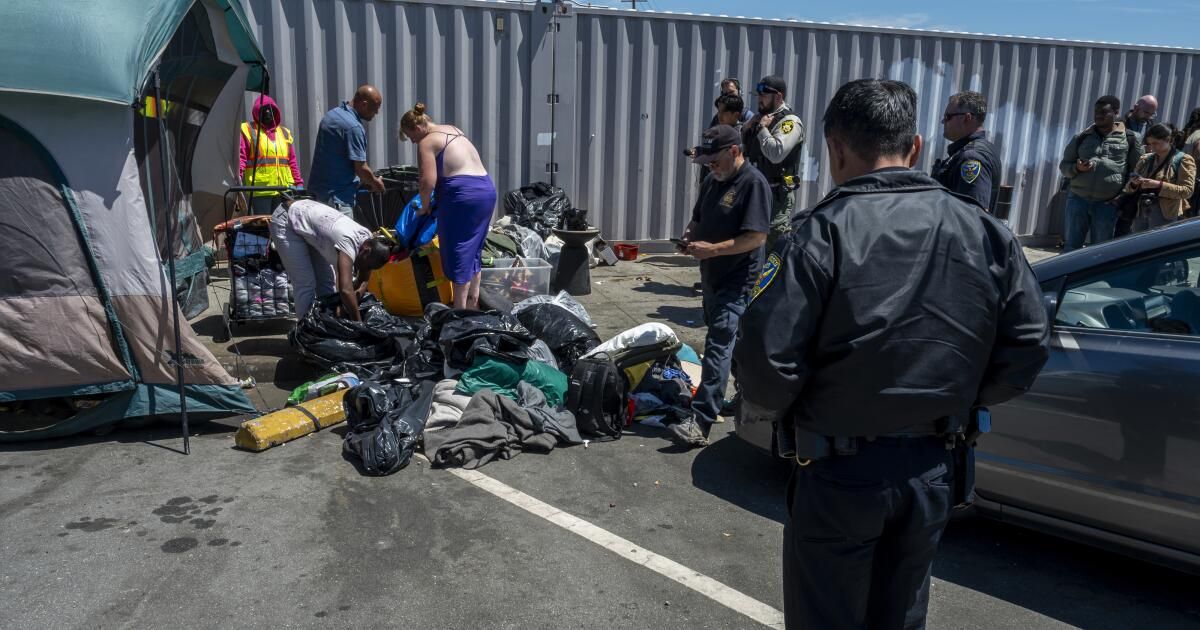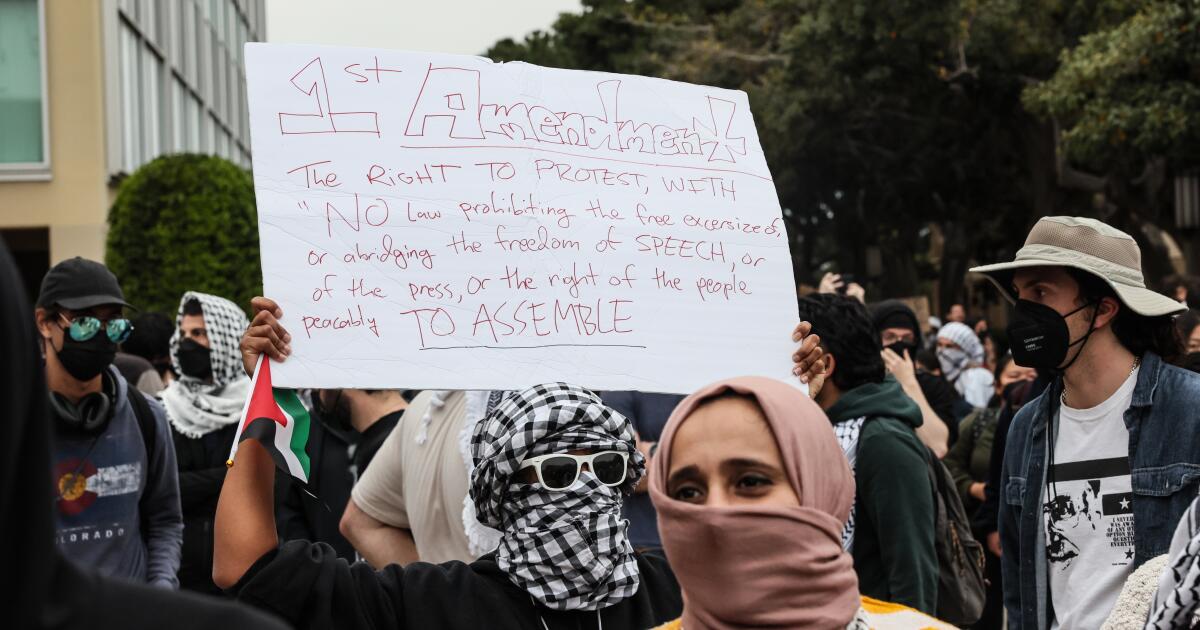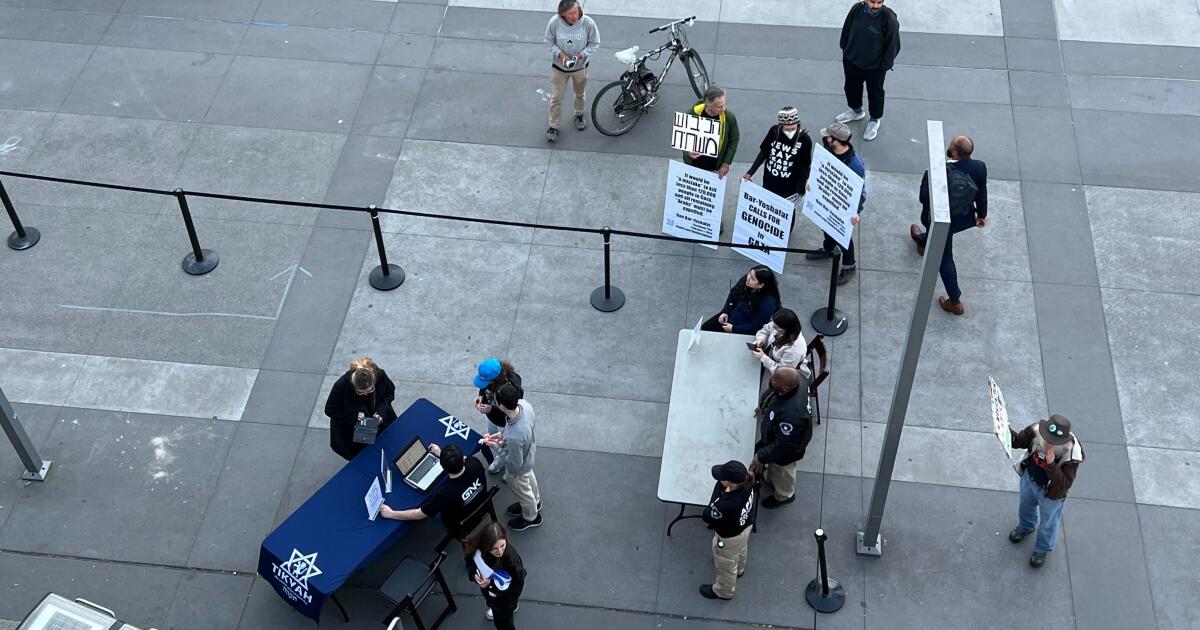A week into what Mayor London Breed called a “very aggressive” effort to clear out homeless encampments across San Francisco, a key question looms: Where will the people living in those tents go?
Outreach workers, backed by law enforcement, have been deployed in recent days in targeted efforts to evict some of San Francisco’s most visible encampments, confiscating personal belongings and telling landlords it’s time to pack up and leave.
They have cleared out unauthorized tent encampments under freeways and a stretch of sidewalk in the drug-ridden Tenderloin neighborhood, aiming to force people off the streets. On Monday, city workers visited a former encampment that lined the sidewalks in front of San Francisco’s only DMV office and had been cleared out more than a dozen times this year, only to be resurrected days later.
On Monday night, the sidewalks were clean.
Breed’s efforts are bolstered by a landmark U.S. Supreme Court ruling on June 28 that authorized local communities to more aggressively restrict homeless encampments on sidewalks and other public property.
In response, Breed said San Francisco, a city that has become a favorite target of the right for its growing homelessness crisis, would launch a more determined effort to clear out the encampments. The time had come, he said, to address “this problem in a different way than we have done before.”
Despite years of efforts to move people into shelters or housing, street encampments remain a visible problem in San Francisco.
(Tayfun Coskun / Getty Images)
There are an estimated 8,300 homeless people in San Francisco, with about half of them sleeping in parks and on sidewalks in makeshift shelters. Despite years of efforts to move people into temporary shelters or permanent housing, tent encampments remain a glaring problem, often accompanied by litter, theft and open drug use.
For years, Breed and other city officials said their hands were tied by decisions by the U.S. Court of Appeals for the Ninth Circuit that deemed it cruel and unusual punishment to penalize someone for sleeping on the streets if legal shelter was unavailable. Now, backed by the Supreme Court ruling, city staff can take a tougher stance if people refuse help.
But San Francisco, along with many other West Coast cities looking to crack down on encampments, has not yet decided where people are supposed to go once their tents are dismantled: The city’s shelters, with roughly 3,600 beds, are at 94% capacity, according to the San Francisco Department of Homelessness and Supportive Housing.
“Unfortunately, San Francisco does not have enough shelter or housing for every homeless person, but we do have a few beds available each day to support the work of outreach teams and continue to grow our system,” Emily Cohen, a spokesperson for the department, wrote in an email.
Jeff Cretan, a spokesman for the mayor, said the city doesn’t necessarily expect a huge influx of new people into shelters. After years of attempts to move people indoors, those still living on the streets tend to be the most reluctant to accept shelter offers, often because they suffer from mental illness and substance use disorders.
In the first three days of raids on the camps this week, only about 10% of people offered shelter accepted it, Cretan said.
Instead, Breed, in the midst of a tough re-election campaign, is turning to strategies other than securing more shelter spots. He said the city could impose criminal penalties on people who repeatedly refuse shelter admission. But the prospect of local jails processing hundreds more homeless people also raises capacity issues.
On Thursday, Breed endorsed another strategy. He issued an executive directive requiring social workers to offer homeless people who are not from San Francisco free transportation out of the city, to cities where they have family, friends or other contacts. Cretan said the city would cover the cost of bus, plane or train fares.
The city has had a similar program in place for years, but it lost steam during the pandemic. Under the new directive, workers must push the relocation option before any other city services are offered, including housing and shelter.
According to the city's 2024 annual homeless survey, about 40% of people living on the streets said they were not from San Francisco.
“This directive will ensure that outplacement services are the first response to our homelessness and substance use crises, allowing people the option to meet with support networks before accessing other city services or facing the consequences of refusing care,” Breed wrote in the directive.

San Francisco Mayor London Breed faces a tough re-election campaign, with homelessness a hot-button issue. Board of Supervisors Chairman Aaron Peskin, right, is among her rivals.
(Eric Risberg/Associated Press)
Breed's hardline approach has drawn sharp criticism from homeless advocates, who argue that clearing tents does not address the poverty and addiction that cause homelessness, and who say his efforts are politically motivated.
“Policies to address homelessness must be humane, legal and effective, not implemented just because someone’s job is on the line,” said Aaron Peskin, president of the San Francisco Board of Supervisors and one of Breed’s rivals for mayor.
Instead, Peskin called for strengthening rent control and eviction protections, and for the city to expand shelter and affordable housing options.
Since Breed took office, the city has increased shelter capacity from about 2,500 beds to nearly 4,000, the mayor's office said, and permanent supportive housing spaces to about 14,000. Cohen, of the Department of Homelessness and Supportive Housing, cited those efforts as the reason the number of people living on the city's streets is at “the lowest level in at least 10 years.”
Cretan said the relocation offers and threat of criminal penalties are just a starting point while the city decides what strategies will work.
“The mayor really wants to make it clear [that] “You have to accept refuge, but obviously not everyone is going to say yes,” Cretan said. “It’s not like you can snap your fingers and everything will change overnight.”












